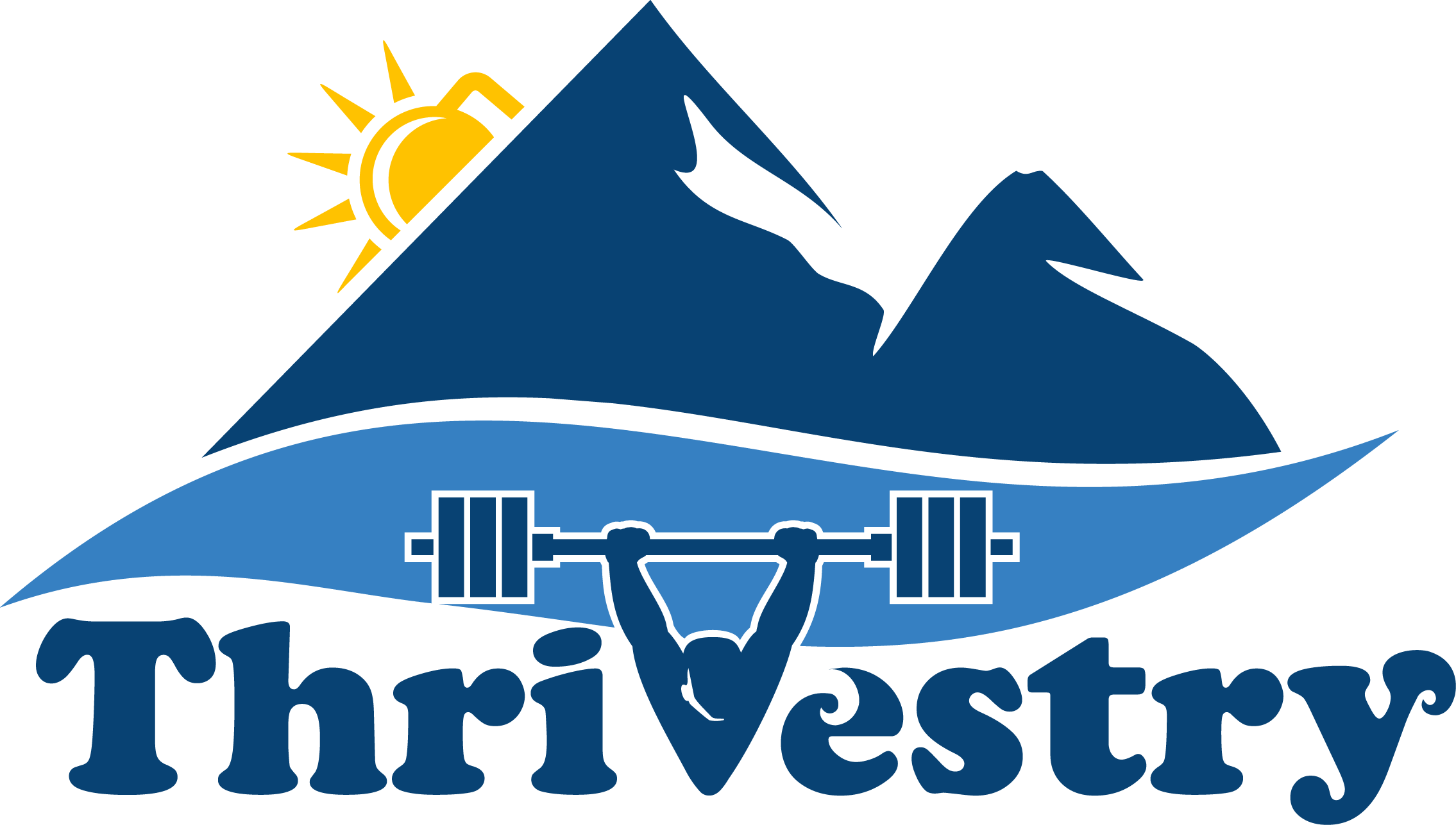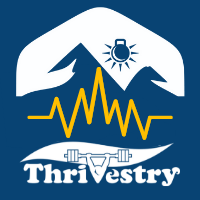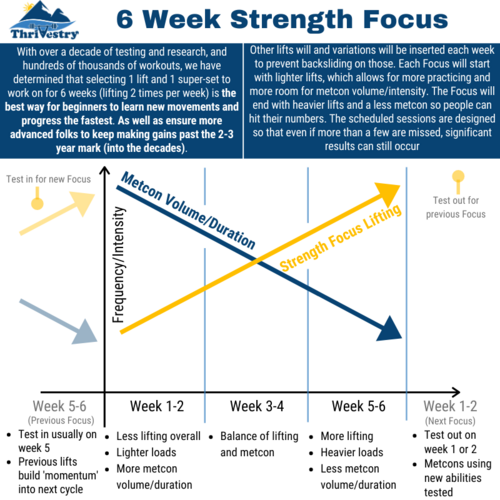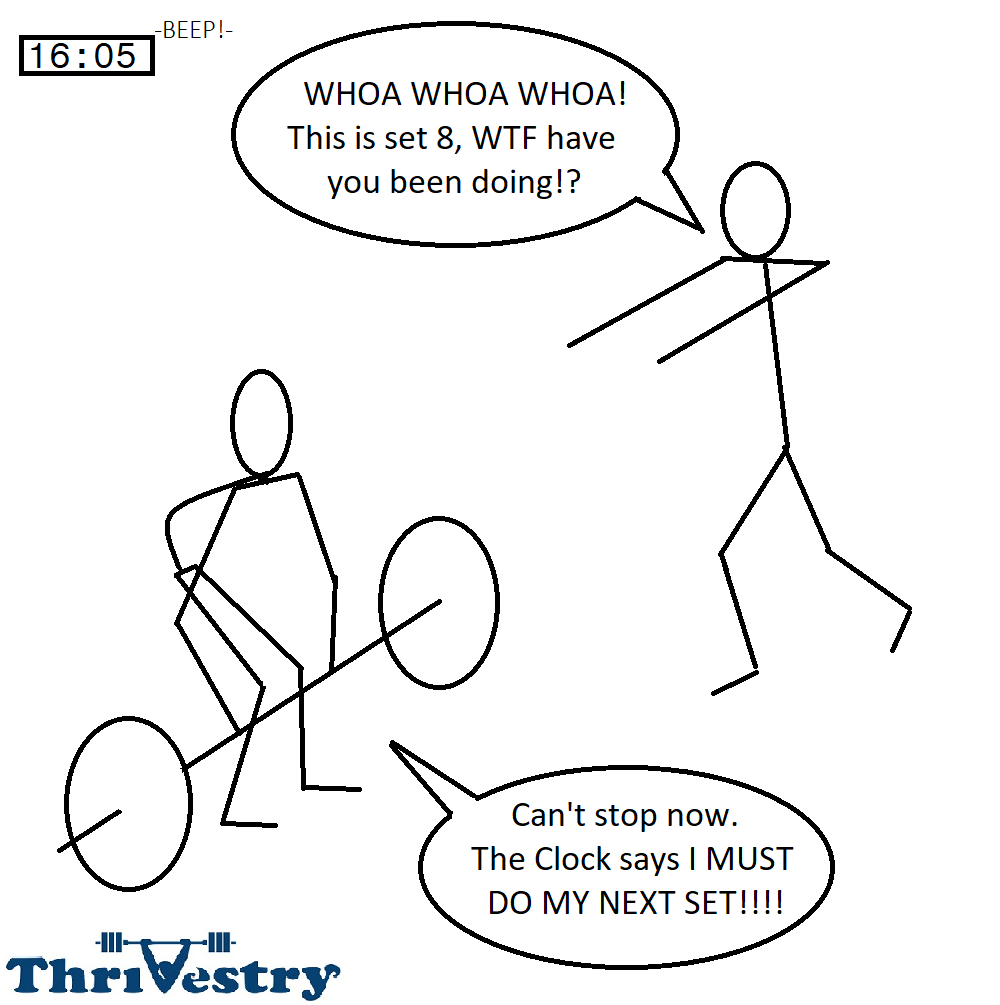Blog
Programming Theory
It is the CrossFit Open, what do I do with the rest of the my week to stay healthy?
The CrossFit Open is a special time in our training year, and we need to approach it differently than we would our usual training.
It is important that if you are taking the Open pretty seriously that you do your best to rest the day before and the day after (or at least, do them at a reduced intensity).
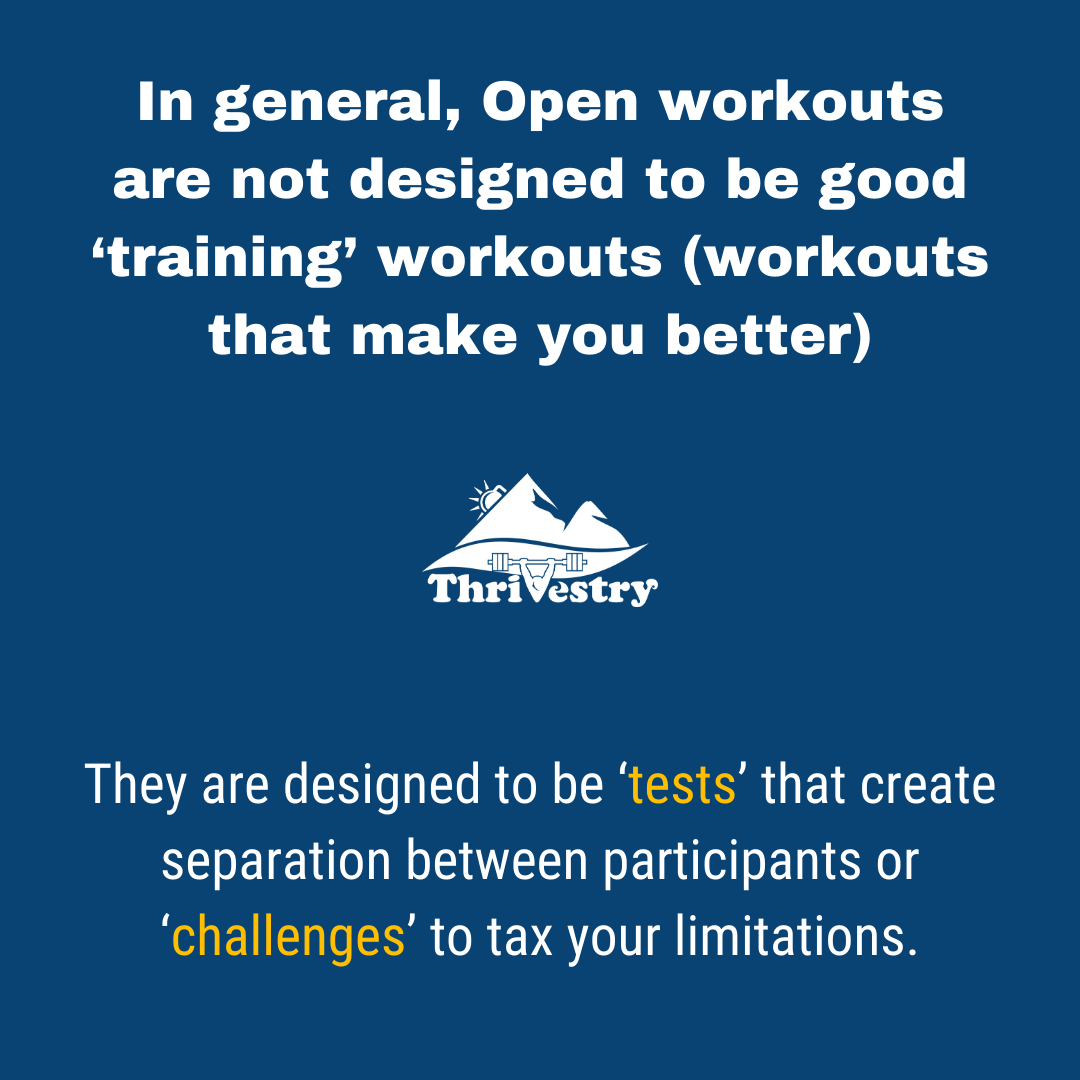
With that in mind, Open workouts (even when done ‘for fun’) tend to put a lot more strain on your body’s central nervous system (CNS) and tissues. This additional strain WILL outpace your ab…
Thrivestry Podcast 020 - Season Finale, JJ’s Abs, Favorite Episodes, Changes for Season 2
Season 1 Finale! We talk about our favorite episodes and go through some of our favorite infographics. Then I talk about my upcoming article “I Did CrossFit For 15 Years and This Is What It Did To My Body” (with a sneak preview of my abs). Then we go on to talk about how season 2 will be different and what you can look forward to when we kick that off in a few week.
YouTube Link Here: https://youtu.be/0pX7ykTy9WUhttps://youtu.be/k9qXn2bXYRI
Podcast 20 Here: https://anchor…
Thrivestry podcast 014 EDC as a fitness program and concerts better than yoga
Research has shown that experiences make you happier (than buying 'stuff'), your 'general physical preparedness' program should enable you to do the most stuff and take advantage of opportunities and challenges as they come up. I have come up with a graphic that provides a visual of this concept. The 4 components are Strength, Cardio, Skill, and Play. Where do physical activities fall on this chart? How can you use this chart to make sure you have the right amount of balance?
Then we…
EDC, GPP, Marie Kondo, and being prepared for anything
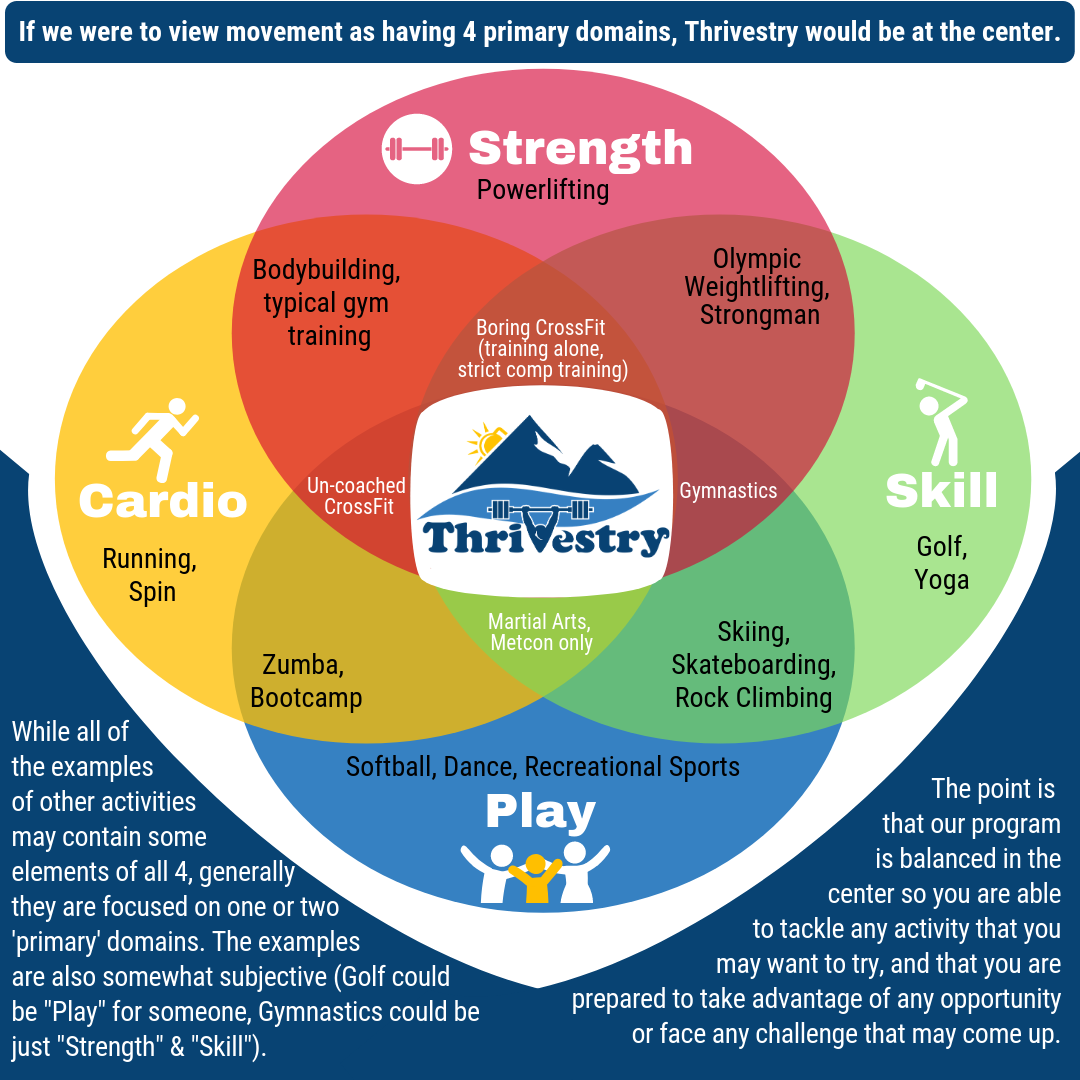
EDC stands for “Every Day Carry”. It is a term generally used for what items a person tries to bring with them every day so they can be prepared for life’s unknown and unknowable.
For some, it means carrying their phone, charging cables, a backup battery, headphones, maybe some notebook/journal. For others, it means having a multitool, a flashlight, maybe some paracord, nearby.
Another version of EDC might be the outfit that you can wear in just about any situation. That little black dress m…
Using the Context of the Programming for Longevity and Getting out of Ruts
The context is the recommended overall approach to the class that day. Without a planned approach you will likely stick with the same default approach you are comfortable with and you will not get the most out of your training.
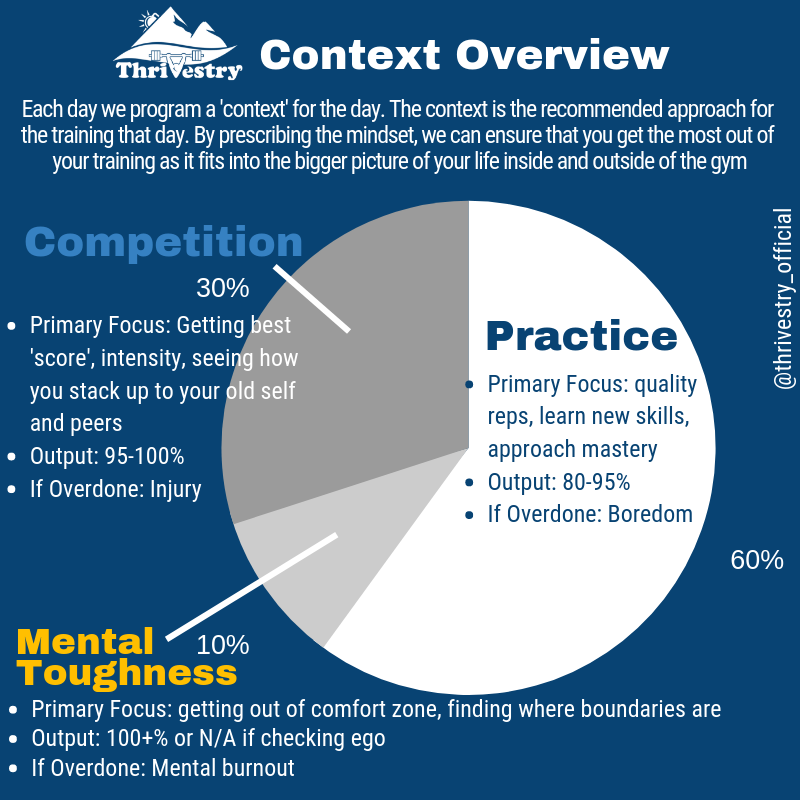
There are three contexts: “Practice”, “Competition”, and “Mental Toughness.”
With Thrivestry, we balance these three contexts with the right ratios to each other and with an eye toward the lesson plan for the day (as well as the week, the month, and the year!)
The pr…
Movement Frequency in Thrivestry Compared to Other CrossFit Programs
![]()
(One of my many code powered spreadsheets I use to create programming)
It should be obvious by now that I love data and numbers (so you don’t have to), but I’d like to take some time today to break down some numbers ‘behind the curtain’ so you can understand some of the data behind what we are doing, as well as how it is different than many other programs out there.
These thoughts were spurred on by the awesome post by the folks at Beyond the Whiteboard. Head on over there to see what most C…
One of Thrivestry's Secret Ingredients That Makes People More Awesome, the "Strength Focus"
CrossFit is known for being "constantly varied", but that doesn't mean random. Can we improve results, make the classes easier (to learn movements and to coach), while improving safety and ensuring that people make gains for more than 10 years?
Yes.
And we can do that by using what we call the "Strength Focus".
Why have a “Focus” at all?
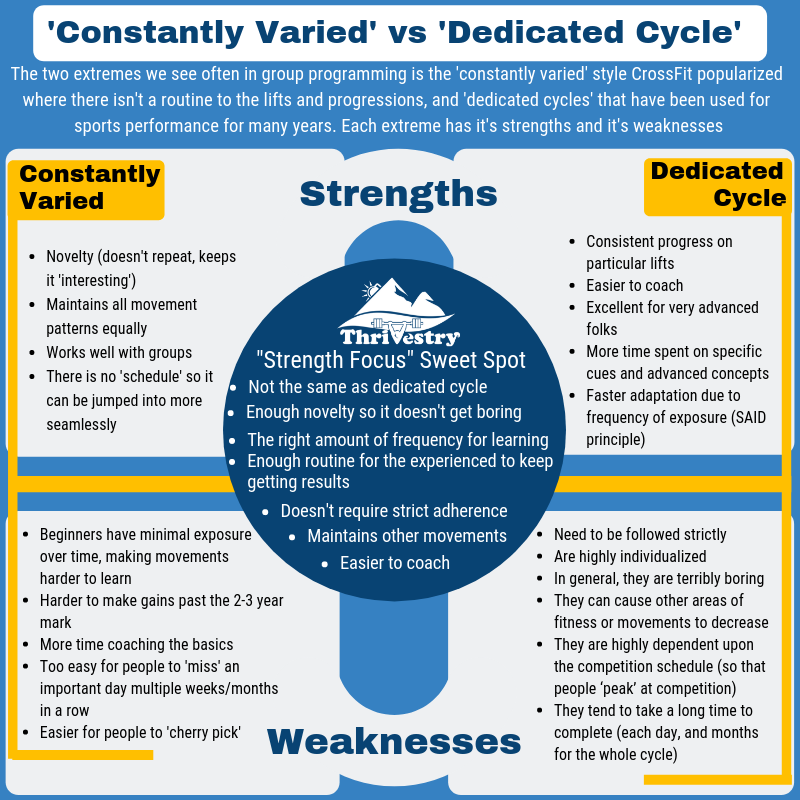
CrossFit can be credited with demonstrating the power of ‘constantly varied’ or ‘seemingly random’ training for making people fit. While this style of tr…
Customizing the Programming for Individual Clients
Every person that steps into one of your classes should be getting a unique training day according to their abilities and goals.
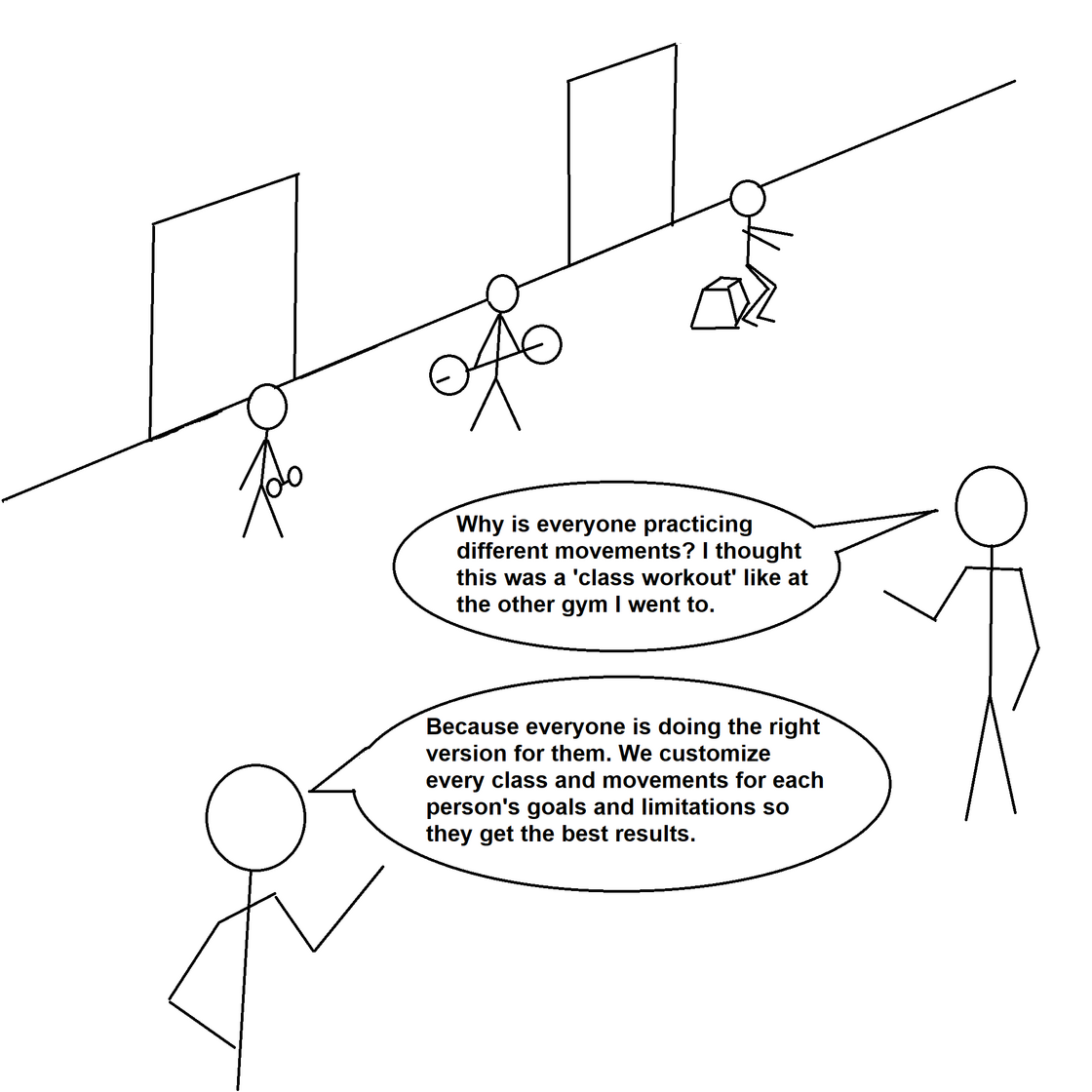
Starting with the approach to the context, how they perform the warm up, what skills and progressions they do, the mobility, what weights they lift, how they modify the workout, and if they do the cash out/hypertrophy…
There is a reason why the daily lesson plans fill up an entire page of text. It is to make sure everyone has plenty of options for customization for…
Starting to do Competition Programming (Getting Ready for Comp Part 2)
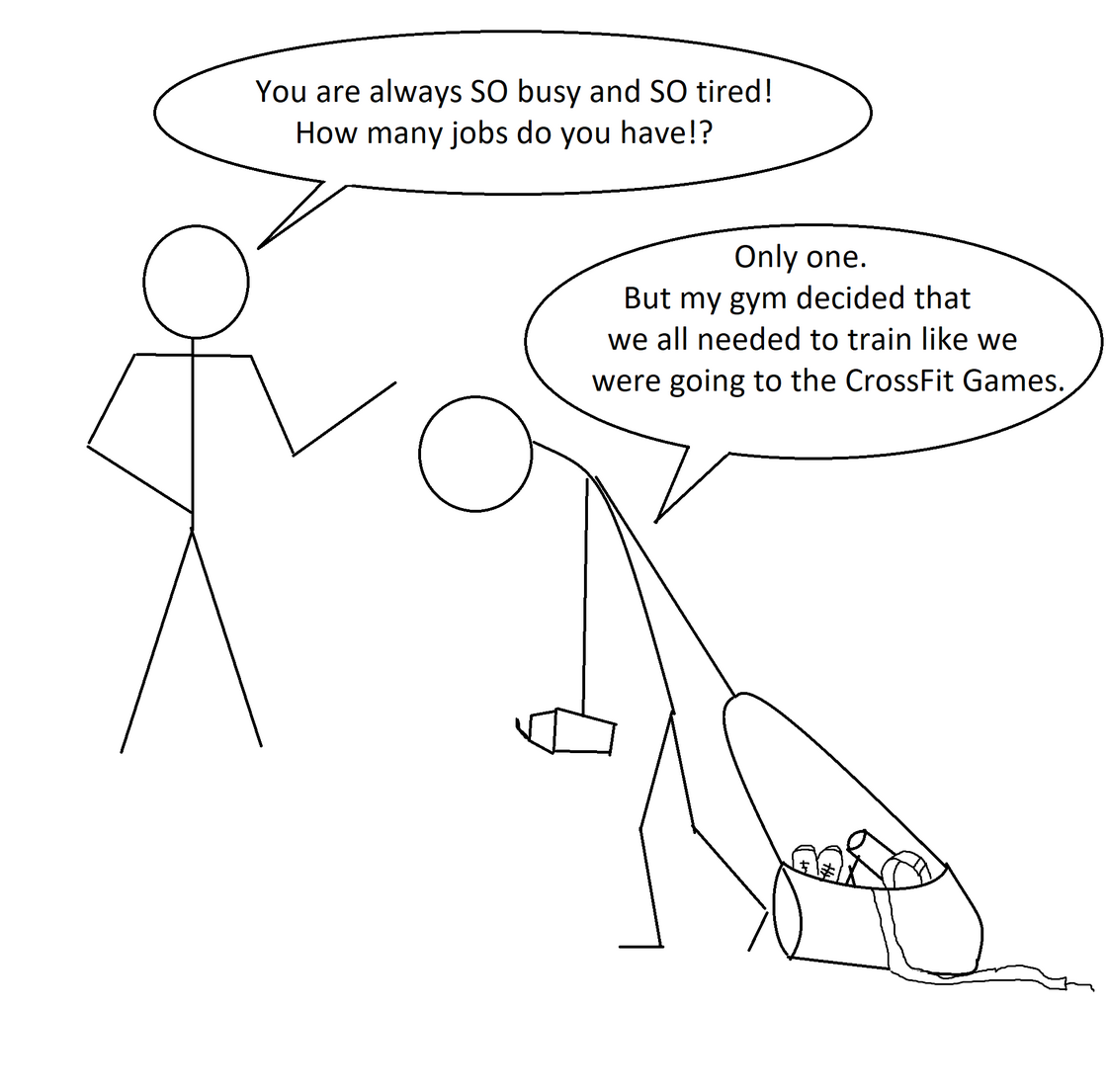
In Part 1, we talked about the beginning steps to start shaping your training around entering competitions. We covered “Phase 1” or the “Novice” category of the Competition Continuum:
- Phase 0: Coming to class consistently and just learning the movements.
- Phase 1 aka “Novice Competitor”: Doing the majority of the workouts at the Performance level and doing a bit of extra work.
- Phase 2 aka “Amateur”: Doing competition programming in a group while being coached
- Phase 3 aka “Semi Pro”: St…
'On the Minute' Drills Are Great, but Let's Not Overdue It!
I’d like to start by saying that using the clock to keep the class on time and/or to keep people moving at the right pace during lifting and drills is a great idea! We do these regularly for shorter efforts/drills and I encourage everyone to use it to help the lifting portion of the class on time.
For example, after some coaching and warm up sets, you should start the timer and say “Okay everyone! We have 20 minutes to do 6 sets of 3 reps. Complete one set every 3 minutes or so!”
This will …
